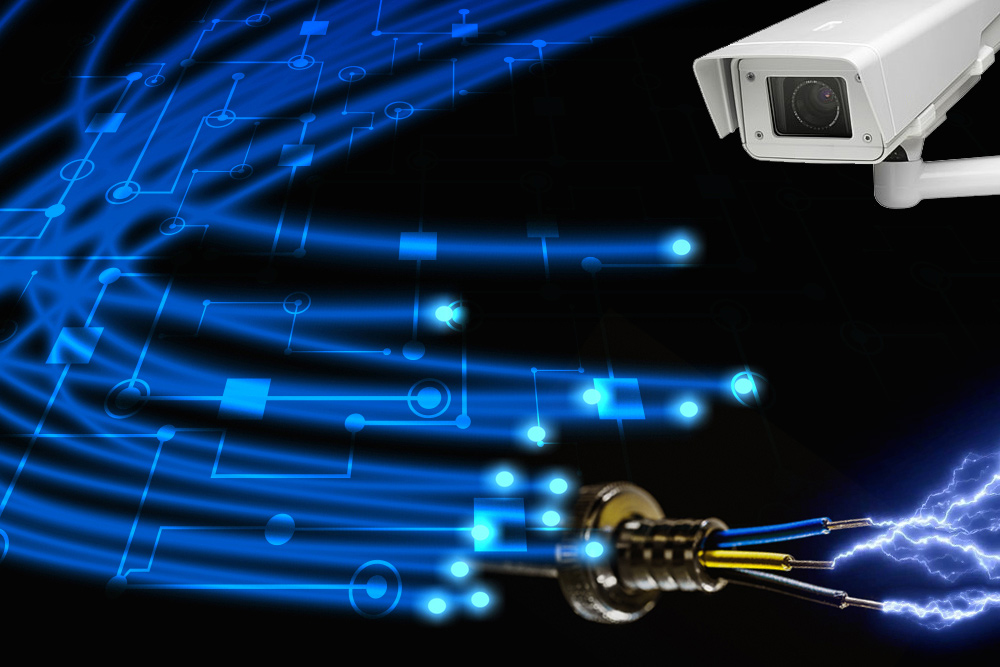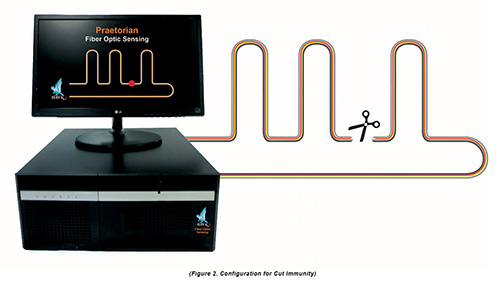Why a Fiber Optic Security System Improves Your Property’s Protection and Monitoring
Why a Fiber Optic Security System Improves Your Property’s Protection and Monitoring
Blog Article
Why Fiber Optic Protection Systems Are the Future of Security
The shift to fiber optic safety systems notes a significant development in the world of protection, driven by their extraordinary data transmission capabilities and resilience to outside interferences. These systems not just promote faster and a lot more reliable interaction but also provide an economical service with reduced upkeep needs. As the landscape of safety evolves alongside arising innovations such as AI and IoT, the possibility for optical fiber to enhance and redefine protection facilities comes to be increasingly apparent. The effects of these developments raise vital concerns about the future of protection steps and their efficiency in an ever-changing setting.
Advantages of Fiber Optic Solutions
One of the main advantages of fiber optic systems is their exceptional bandwidth ability, which helps with the transmission of huge quantities of data over cross countries without significant loss. This particular is particularly useful for safety applications that call for the continual monitoring and transfer of high-def video feeds, sensor data, and other important info. Fiber optics can suit the growing demands of modern safety systems, making sure that information continues to be undamaged and trustworthy.
In addition, fiber optic cable televisions are less at risk to electro-magnetic interference, which can be a considerable issue in atmospheres with various electronic tools. This resistance boosts the integrity of the data being transmitted, thereby lessening the threat of information breaches or system failings. Fiber optic systems are inherently more protected than standard copper wires, as tapping right into a fiber optic line without detection is exceptionally tough.
The durability of fiber optic cords likewise contributes to their allure. They are immune to ecological aspects such as moisture and temperature fluctuations, lowering upkeep costs and boosting system long life. Overall, these benefits position fiber optic systems as a durable and reliable choice for modern-day safety and security frameworks, ensuring dependable and protected data transmission.
Boosted Data Transmission Speed

The capability to send substantial amounts of information promptly promotes the smooth combination of high-def video clip feeds and advanced analytics. Protection systems can currently process and analyze info in real-time, enhancing reaction times and situational recognition. In addition, fiber optic connections sustain longer transmission distances without destruction of signal quality, making them ideal for expansive safety networks.
The raised rate of fiber optic systems not only improves the efficiency of safety and security procedures but also minimizes latency. This is particularly crucial in critical situations where timely decision-making can stop security violations or mitigate possible hazards. As organizations continue to focus on security and efficiency, the need for rapid and dependable information transmission will unquestionably strengthen fiber optic systems as a keystone of modern-day security framework.
Resistance to Disturbance
Fiber optic safety systems regularly demonstrate remarkable resistance to electromagnetic interference, a critical benefit in environments susceptible to digital noise. Unlike standard copper wires, which can be adversely impacted by magnetic fields, superhigh frequency interference, and other forms of electrical disruption, fiber optic cords make use of light to transfer data. This intrinsic home ensures that the signals remain clear and unchanged, despite bordering electronic task.
Using glass or plastic fibers in fiber optic innovation develops a barrier versus interference, permitting for reliable information transmission also in difficult situations such as commercial facilities, urban locations with high digital traffic, or locations near radio towers. This characteristic significantly decreases the likelihood of signal destruction or loss, making fiber optic systems specifically appropriate for security applications where honesty and accuracy of information are vital.
Moreover, this resistance to interference enhances the total performance and dependability of security systems, ensuring that tracking and sharp systems work effortlessly. In a globe where safety is progressively intimidated by advanced technologies, the strength of fiber optic systems stands apart as a crucial attribute, reinforcing their status as an essential element of modern security infrastructure.
Cost-Effectiveness With Time
Significant expense financial savings can be attained over time with the implementation of fiber optic protection systems. While the initial investment may appear greater compared to conventional copper-based systems, the lasting financial benefits become evident with minimized operational and upkeep prices (fiber security). Fiber optic cable televisions are inherently a lot more durable and less prone to environmental aspects, which converts to reduce substitute and fixing expenditures over click their life-span
Moreover, fiber optic systems need much less power to operate, which additionally lowers energy expenses. Boosted data transmission abilities permit less repeaters and amplifiers, minimizing equipment investment and improving setup processes. The scalability of these systems additionally adds to cost-effectiveness, as companies can increase their safety facilities without incurring significant additional expenditures.
An additional aspect to think about is the boosted efficiency in monitoring and reaction capacities that fiber optics offer. Improved real-time data transmission can lead to quicker event response times, potentially mitigating losses and obligations connected with safety and security violations. Altogether, the long-lasting advantages of fiber optic protection systems not just warrant the first expense but also place them as an economically sensible option for organizations looking for robust protection services.

Future Innovations in Security
Advancing modern technologies are readied to revolutionize safety systems, incorporating fabricated knowledge (AI) see this here and device discovering to enhance risk discovery and action capabilities. These technologies will permit safety systems to analyze huge amounts of information in real-time, recognizing patterns and anomalies that indicate potential risks. This aggressive strategy will certainly allow much faster decision-making and much more efficient case actions.
In addition, the consolidation of the Net of Points (IoT) is leading the way for interconnected protection tools, offering comprehensive surveillance and surveillance. Smart sensing units can relay details concerning ecological changes, while automated notifies can alert protection employees immediately of suspicious tasks.
Additionally, the advancement of biometric modern technologies will additionally boost safety devices. Face acknowledgment, fingerprint scanning, and retina identification are becoming more innovative, providing layers of verification that are hard to bypass.
Verdict
In conclusion, fiber optic safety systems stand for a substantial innovation in security technology, using exceptional information transmission speed, resistance to electromagnetic disturbance, and long-lasting cost-effectiveness. As the need for advanced safety remedies remains to expand, the assimilation of optical fiber with emerging technologies such as my website AI, IoT, and biometrics will better enhance protection facilities (fiber security). The mix of these innovations will certainly ensure a more safe and secure and receptive environment, strengthening optical fiber as a keystone of future security systems
Report this page